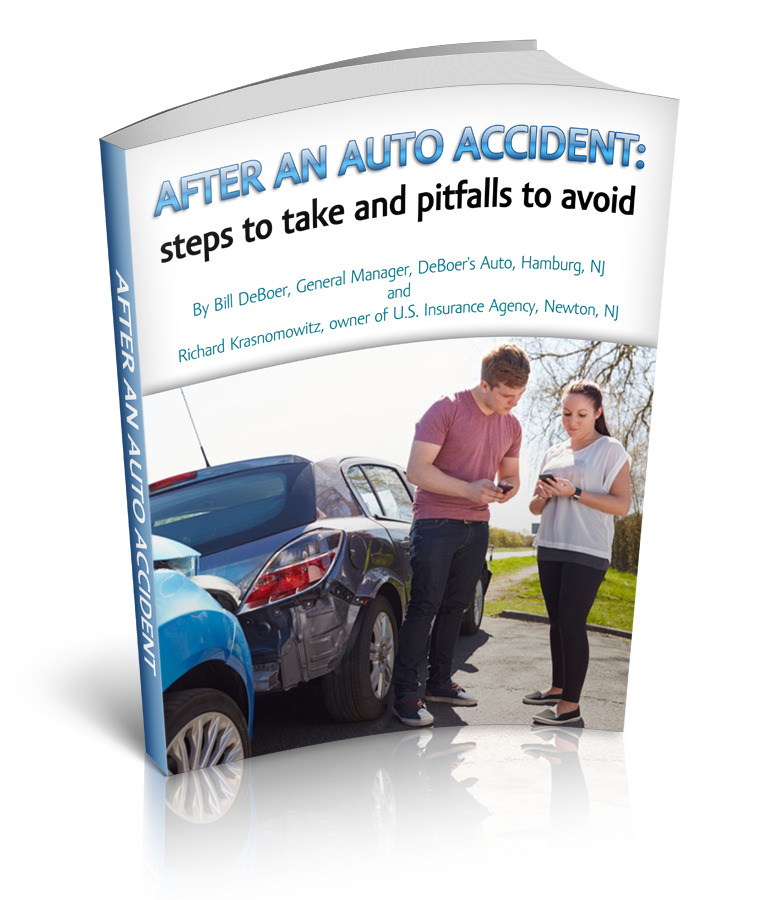Whether "fifteen minutes could save you fifteen percent" or "you're in good hands" or you were sold your car insurance by a fast talking, problem solving woman with a headband, you still need to know what to do when an accident happens. And they do happen! In Sussex county alone there were 3,709 crashes in
2012, according to the New Jersey Department of Transportation. There were 284,062 in 2012 in the entire state of New Jersey. That's 778 accidents a day! As bad as it is to be in a fender bender or worse, the way you handle the aftermath can have major financial and practical effects. Should you call the police? When do you get in touch with your insurance or the insurance company of the other driver? Can you go to your favorite body shop or do you have to use the shop preferred by your insurance company?

That's why we've covered the fundamentals in AFTER AN AUTO ACCIDENT: steps to take and pitfalls to avoid. This blog post offers a quick overview by examining the five basic ways to get started.
1. Estimating the Value
Once you have taken the time to call your insurance agent or company, you will need to figure out a fair estimation of the vehicle's value.
2. Roadblocks
It is important to remember that a lot of insurance companies will throw up all sorts of roadblocks during his process. There may be tricks they try, such as intimidating the customer into believing the automobile has to be moved before they can adjust it. This is not true.
3. Total Loss
Once the vehicle has been deemed a total loss, an agreement on the total worth of the vehicle has to be reached between you, the consumer, and the insurance company.
4. Gap Insurance
If there is a loan on your vehicle at the time of the accident, this would be the perfect situation to have gap insurance. Gap insurance is an optional insurance that may be added to your auto loan at time of purchase. If your car is deemed a total loss, your gap insurance may pay the difference between the balance left on your loan and what your insurance company pays.
5. Rental Coverage
After the accident, you’re left without a car. You need to find out whether you have rental coverage. If the accident was your fault and you have physical damage coverage and rental reimbursement coverage on your policy, figuring out the limits on the policy is important.
Want to read more about solving this challenge AFTER AN AUTO ACCIDENT: steps to take and pitfalls to avoid.








